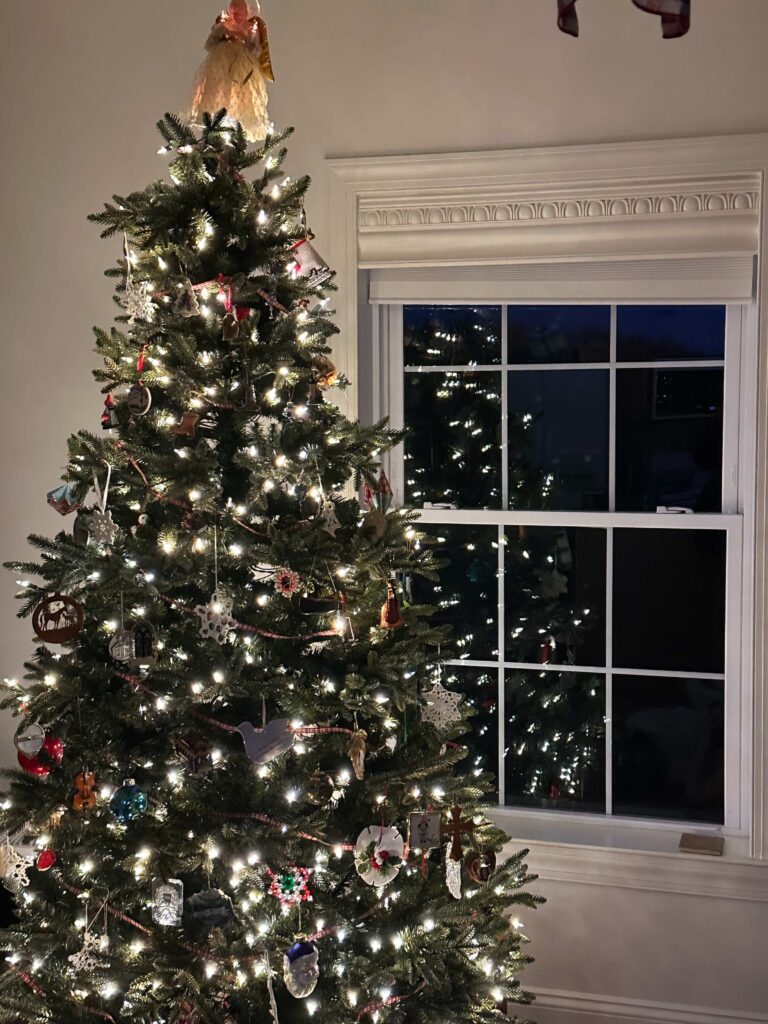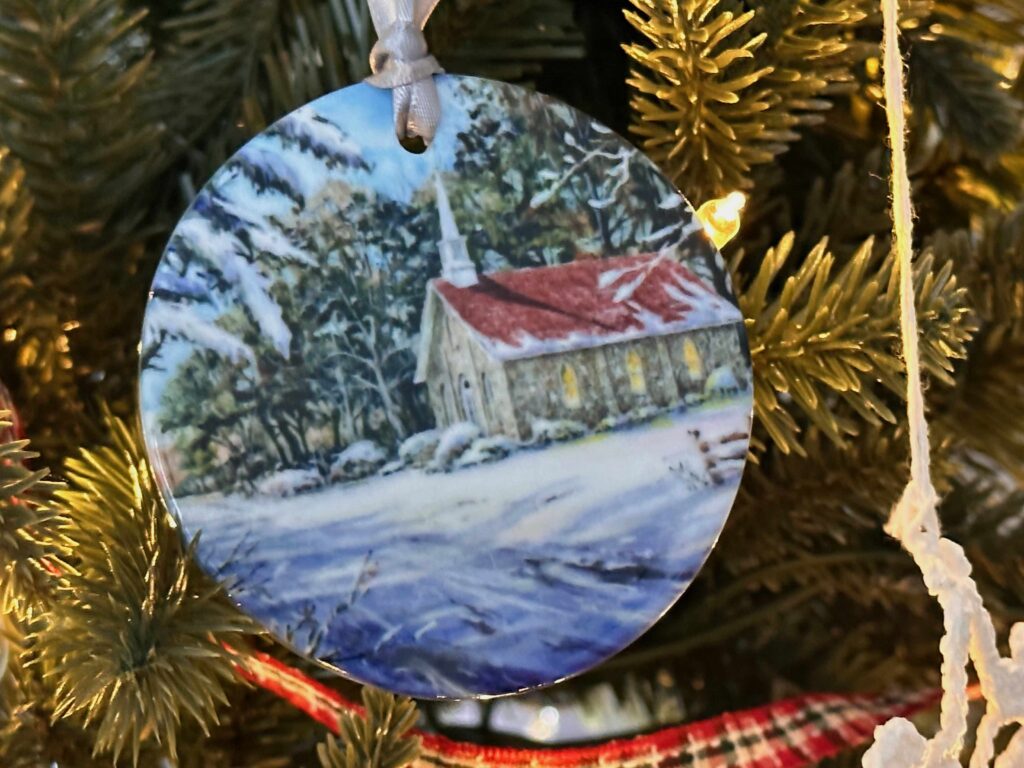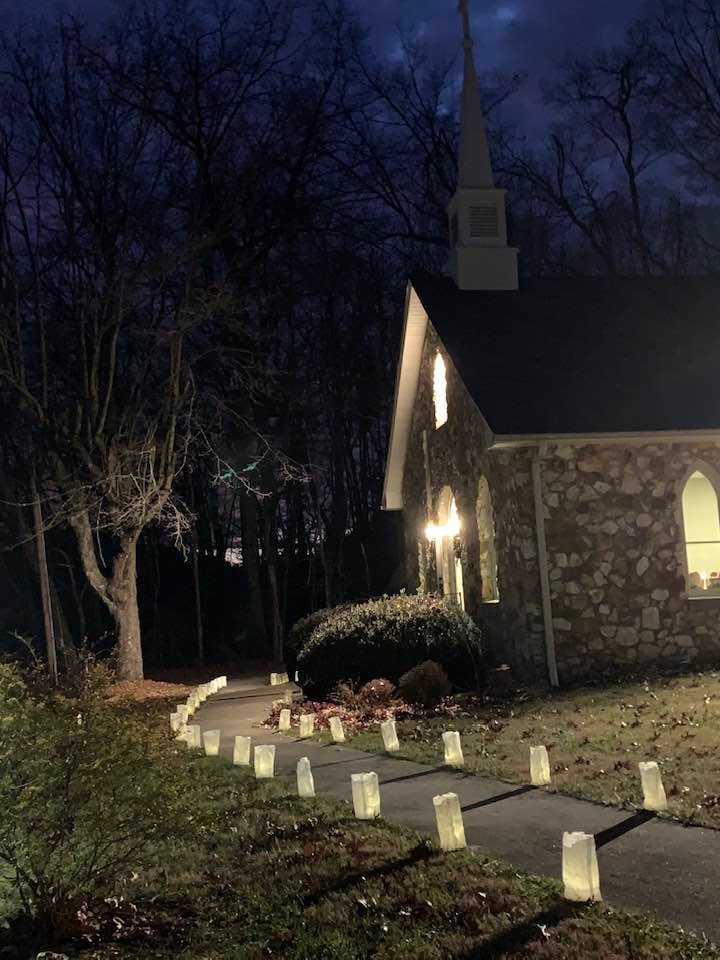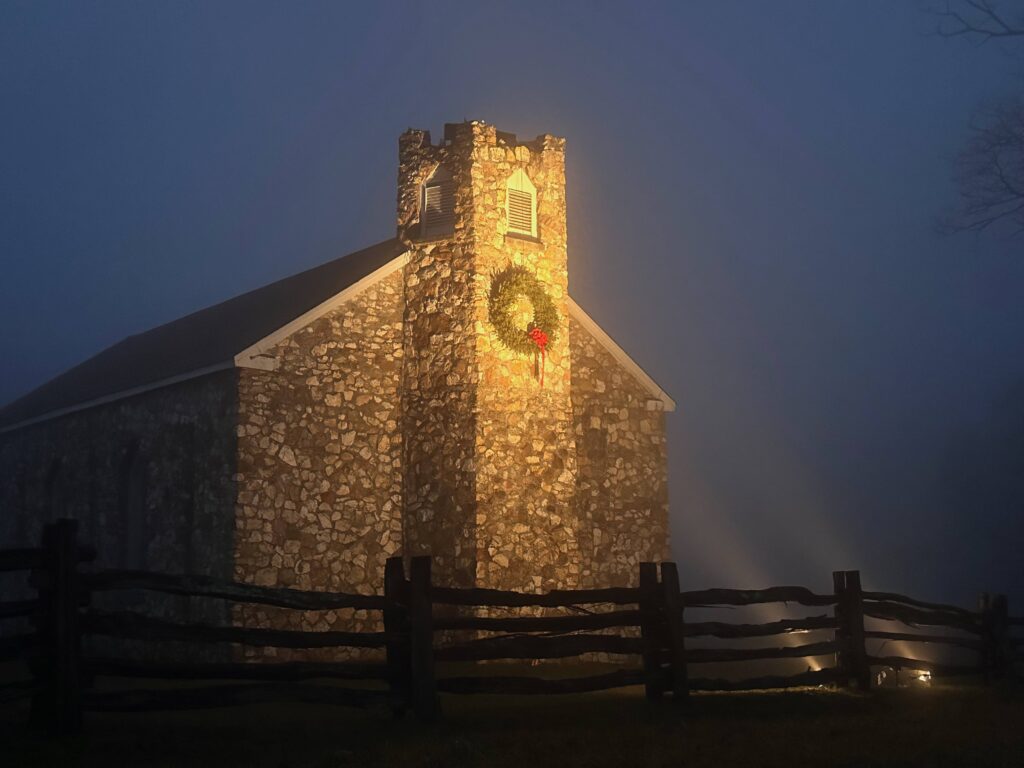Below is an article I wrote a few years ago and reworked for local newspapers for this year. This is going to be a Christmas to remember for I tested positive for COVID this morning. I had already recored my Christmas Eve homily which hopefully can be shown as I will still be in quarantine this weekend. I have spent the past three years trying to avoid this, but it finally came home with me. Thankfully, so far, it’s like a sinus infection with my head feeling like someone stuff a bale of cotton in it. I hope you have a Merry Christmas and stay warm (as it promises to be cold here this weekend).
Silent Night, Holy Night
All is calm, all is bright…

Of all the Christmas Carols, Silent Night is perhaps best known. The carol which is often sung in candlelight at the end of Christmas Eve services is over two hundred years old.
On Christmas Eve 1818, Austrian pastor Joseph Franz Mohr was frantic. The Salzach River had flooded and the waters seeped into the church organ. With his evening service approaching and no musical accompaniment, he wasn’t sure what to do. But he remembered a Christmas poem he’d written a few years earlier. He took the poem to his friend, Franz Xavier Gruber, who also served as the church organist and choir director. In a few hours, Gruber was able to put music to the poem and that evening in St. Nicholas Church in Oberndorf, Austria, Mohr and Gruber, accompanied by a guitar and a local choir, sang “Stille Nacht,” as it’s known in German, for the first time.
Slowly the carol, which is so loved today, became better known. After Christmas, Karl Mauracher was hired by the church to repair the organ. While working on it, Mohr sang the song to him. Obtaining a copy, Mauracher shared the carol with other churches as he traveled around maintaining organs. In 1831, the song was sung at the Leipzig fair, where it received wider attention. In time, minor changes were made to the words and composition to create the arrangement we know today. The music was first published in 1838.
As German-speaking immigrants made their way to America, they brought the carol with them. It was first published in the United States in the 1849 Methodist hymnal. The translation that is most popular today was made by John Freeman Young when he was the Episcopal priest at Trinity Church in New York City. He published the carol in 1863 in a collection of Sunday School songs.
As the carol become more popular, no one seemed to know who had written it. It was often thought of as an unknown work by one of the great composers, perhaps even Mozart, Haydn, or Beethoven. Mohr died in 1848, before the carol become known world-wide. Shortly before his death in 1863, Gruber shared the story of the carol’s history, but many doubted the story. Decades later, a hand written copy of the hymn was found. After extensive examination, it was found to be written by Mohr and on the top right of the page he’d written “Melodie von Fr. Xav. Gruber.” The story was authenticated.
Silent Night grew in popularity around the time that Christmas, as we know it, was becoming popular in the English speaking world. Two centuries earlier, the Puritans banned Christmas in both England and the Massachusetts Bay Colony. Although the ban ended following the restoration of the monarch with Charles II in 1660, for decades it wasn’t seen so much as a religious holiday as it was an opportunity for drinking and revelry. One of George Washington’s great victories in the Revolutionary War can be credited to the American’s lack of celebration of the holiday. On a cold Christmas night in 1776, Washington was able to move his army across the Deleware River and attack the German Hessian troops fighting for the British. These troops, who were staying in Trenton, New Jersey, had spent the evening celebrating. They were taken by surprise.
However, on both sides of the Atlantic, Christmas celebrations began to change in the 19thCentury. In America, the publication of Clement Clarke Moore’s, “The Night Before Christmas,” along with the writings of Washington Irving brought Christmas customs back into the minds of the people. About that time, large numbers of German immigrants began to flow into the country bringing Christmas customs with them. In England, the publication of Charles Dickens, “A Christmas Carol,” linked the holiday with doing good for the less fortunate. The marriage of Queen Victoria to Prince Albert, a German, also brought German Christmas customs to England. In America, Christmas trees, which were first noticed in the homes of Pennsylvania Dutch in the early 1800s, became an accepted part of the holiday by mid-century.
In 1914, almost a hundred years after the carol was first sung, much of the world was bogged down into a war that had begun in August. In the trenches on the Western Front, German and English soldiers huddled inside cold and wet trenches, sniping at each other when someone raised a head. Both sides would charge the other line, only to be cut down by machine gun fire and mortar barrages. Between the lines was no-man’s land, where barbed wire had been strung and corpses laid on the frozen ground. As Christmas 1914 approached, a storm brought more freezing rain and snow. Pope Benedict XV had called for the observance of a Christmas truce, an idea ignored by the leaders of both sides. It was looking to be a bleak Christmas.

On Christmas Eve, however, the weather changed. The clouds disappeared and the moon lighted the darkened landscape. Then, at various pockets along the lines, the German soldiers decorated and lighted trees and placed them along their trenches as they began to sing, Stille Nacht. While the language may have been foreign, the tune was familiar to many of the British soldiers who sang “Silent Night” back to the Germans. Other carols were sung. In places along the trenches, soldiers called for an informal truce and began to move out into no-man’s land to greet those they were trying to kill only hours earlier. The soldier’s shared drinks and exchanged candy and food. On Christmas Day, a couple of impromptu soccer matches occurred. The dead were able to be retrieved and buried. Sadly, this truce didn’t occur along the entire line, but was common along the section where the British faced the Germans.
The Christmas truce of 1914 was a brief respite in a terrible war, partly facilitated by a popular carol that both sides knew. Sadly, it would be the only such truce during the war. In 1914, only four months into the war, most were still hoping for a quick victory. By Christmas 1915, there were millions more dead soldiers and civilians. As the war raged on, it became uglier as new weapons such as tanks, airplanes, and poisonous gas were utilized, each side trying to gain an advantage.

This beloved carol still brings peace to the hearts of those who sing it. Its beginning reminds us of how that which rises from difficulty, such as Saint Nicholas Church having no organ, can have a profound impact on the world. The carol, as it brought together the soldiers of two warring sides during that First World War, reminds us of the possibilities for peace that come when warring sides take a risk and see the humanity of their foes. It is my hope that in this holiday season, when you hear or sing this carol, perhaps while holding a flickering candle in church at night, that you will experience peace.
If you do not have a church home, I invite you to join us up on the Blue Ridge Parkway at one of the Rock Churches this Christmas. Christmas Eve services will be at Mayberry Church, just south of Meadows of Dan at milepost 180, at 6 PM. On Christmas Day, we’ll celebrate Christmas at Bluemont Church, at milepost 192.



I had no idea about the history of this well known carol. Thanks so much for sharing and enlightening me. Hope you are feeling much better and that you had a Merry Christmas despite being sick.
Sorry you have succumbed to Covid, feel better soon.
Your Christmas tree looks very nice and Silent Night is a wonderful carol.
Taking the opportunity to wish you a Happy and Healthy New Year.
All the best Jan
Thanks, Jan. May you and yours have a blessed New Year.
I hope you’re feeling better! It’s cool how Christmas songs can cross language barriers. I remember my grandma singing Christmas carols in German. I don’t know any German, but I could recognize the song.
I’m better, but still testing positive. Lots of our Christmas celebrates comes from German!
Pretty Christmas tree, have a fantastic 2023!
Thank you, Kings. Happy New Year!
So sorry to hear that Covid found you! Glad you were able to get Paxlovid. Hope you’re feeling better soon!
Thanks, Ann. I’m feeling fine, just still testing positive.
Merry Christmas, Jeff! Covid is definitely the gift that keeps on giving. Glad you’re starting to feel better.
Love the Silent Night story. Thanks for sharing.
Thanks, Bob. I hope you had a Merry Christmas. I’ll be interested in hearing of your Christmas dinner tradition for this year.
We are so sorry that you are ill with Covid, Jeff. Feel better soon. We hope you, Donna and Caroline have a blessed Christmas.
It was definitely a different Christmas, FaceTiming as we opened presents in different parts of the house! Thanks, I am feeling better!
Didn’t know most of that history. Thanks for sharing it. I hope you feel better soon!
Thanks, I am feeling better. I’ll test tomorrow and hope I’m negative!
I’m sorry it finally caught up with you. Stay warm and I hope you feel better soon!
So far, so good. It’s kind of a force rest during what is usually a busy time of the year.
I’m so sorry to hear you have COVID, take care of yourself! Thoroughly enjoyed reading the origin of Silent Night, one of my favorite Christmas carols. And last beautiful Christmas tree!
Merry Christmas and Blessings for the New Year!
Merry Christmas, Dorothy. I’m not feeling too bad, just a congested head and tired.
Feel better, Jeff, and loved learning more about Silent Night. Merry Christmas!!
Thanks, Matt, and Merry Christmas!
Hi Jeff – I hope you recover quickly … take care and all the best. This story about Silent Night is fascinating … and it’s a beautiful carol. All the best – Hilary
Thanks, Hilary!
My wife got it for the first time back in October when the rest of us were on our second time. She definitely had worse symptoms but made it through all right. Hoping you do to Jeff. Hope you still have a merry Christmas!
Thanks, Ed. Glad you all came through it. I’m feeling better this morning, after two days of Paxlovid.